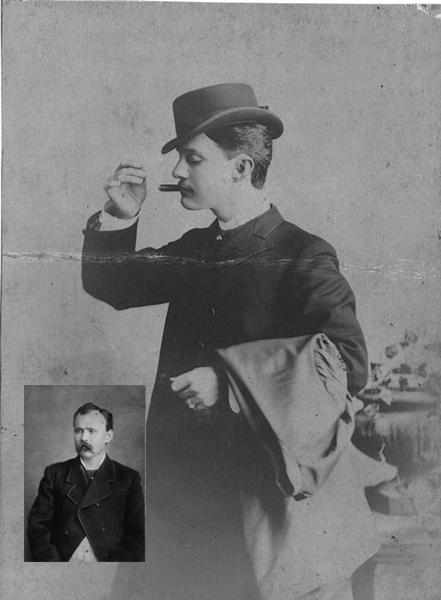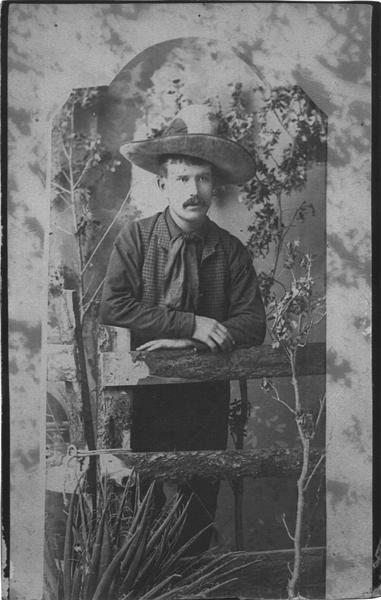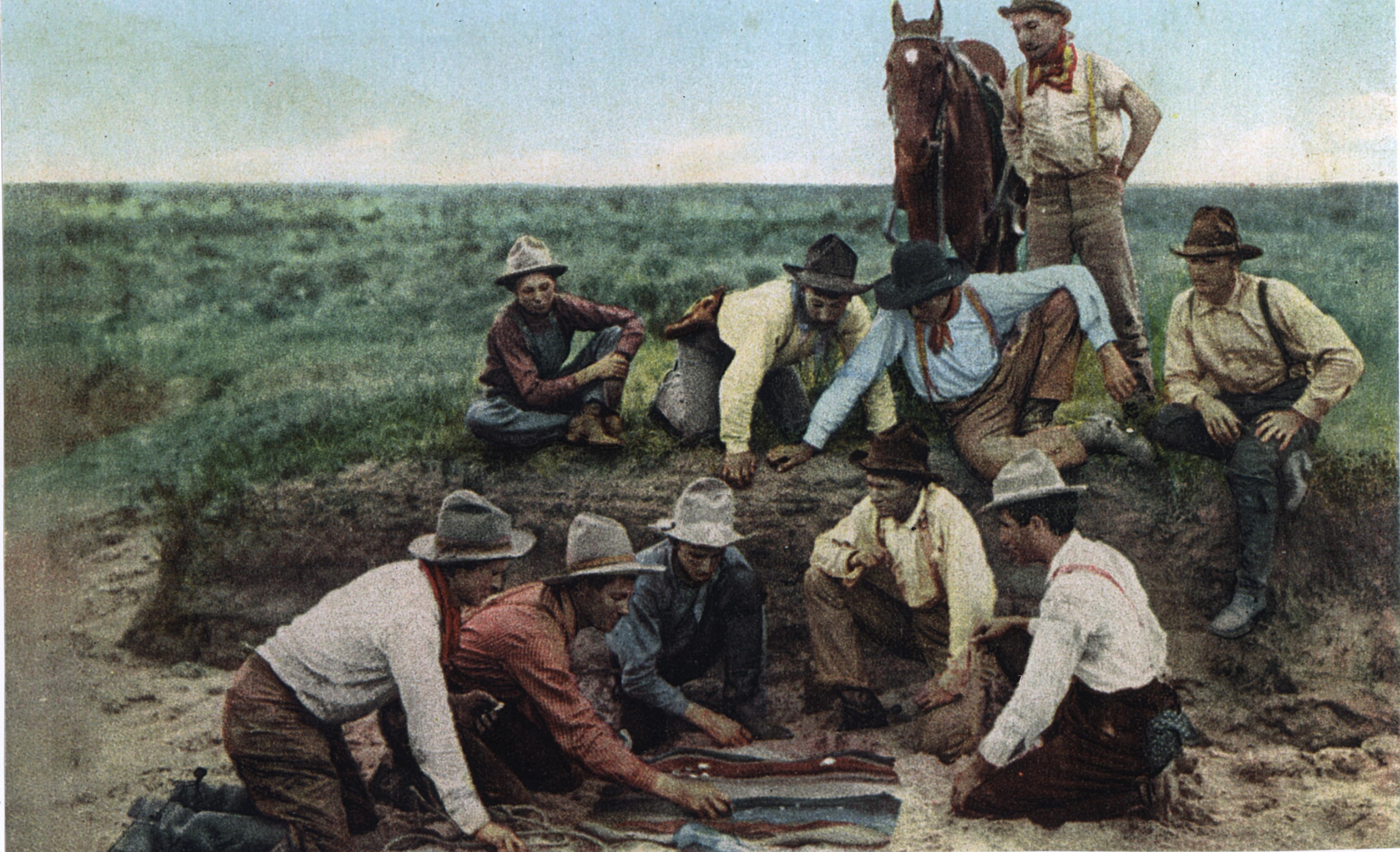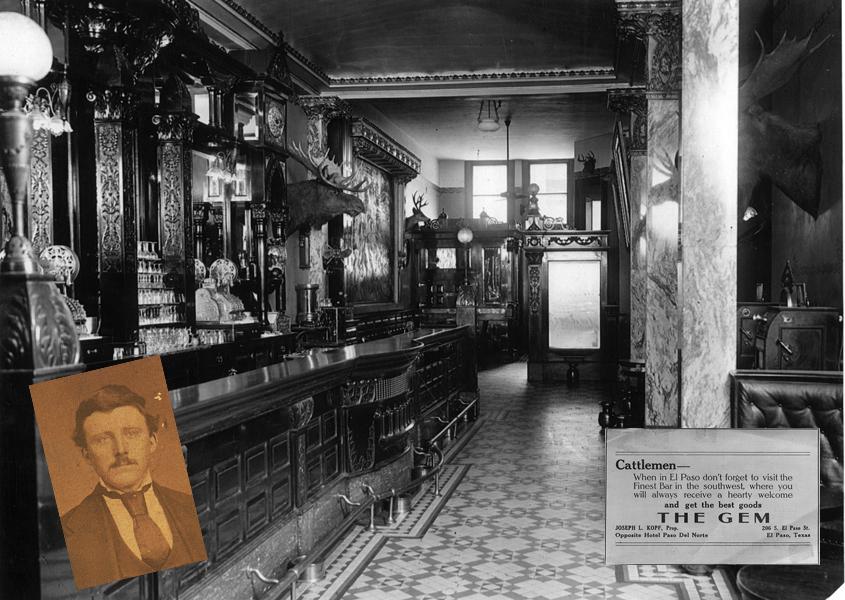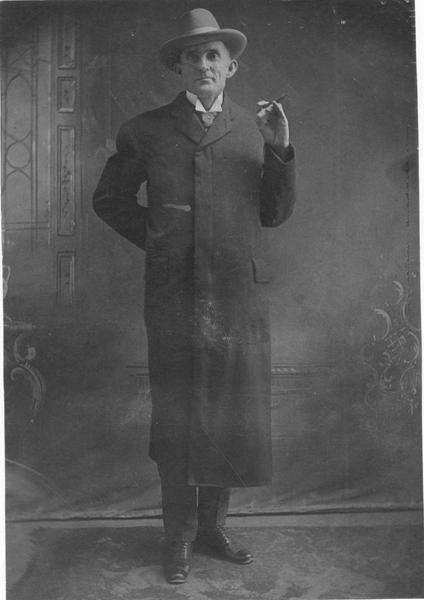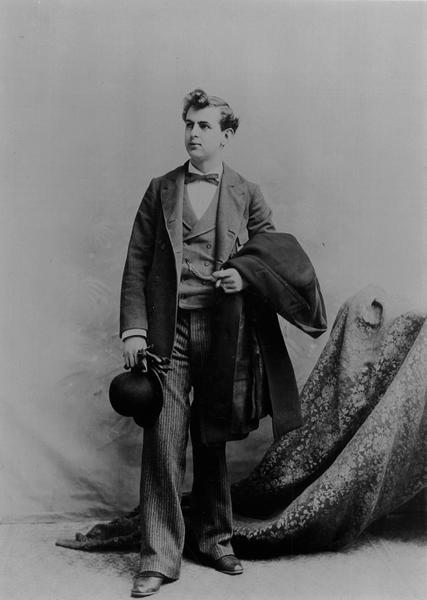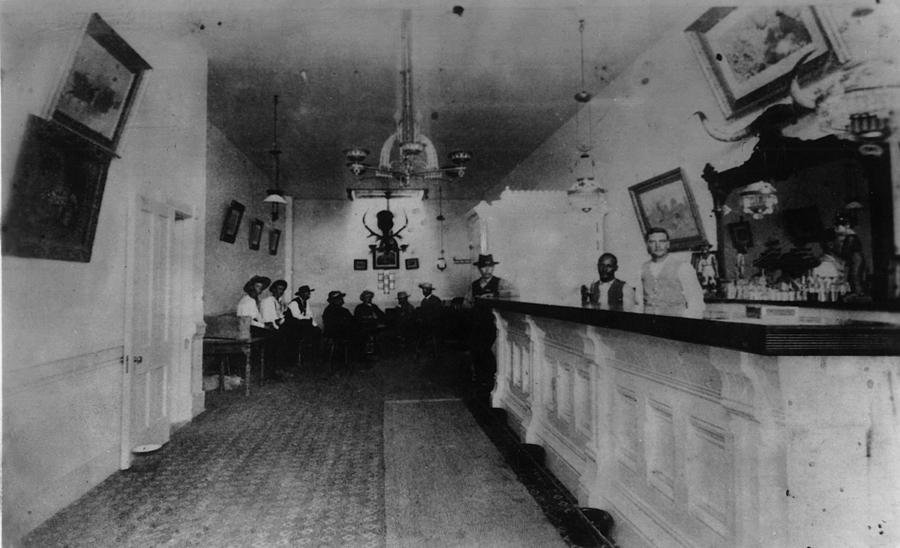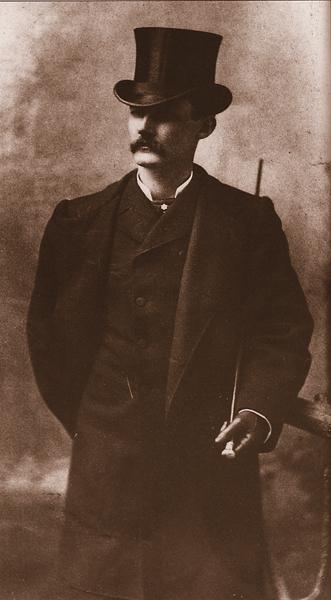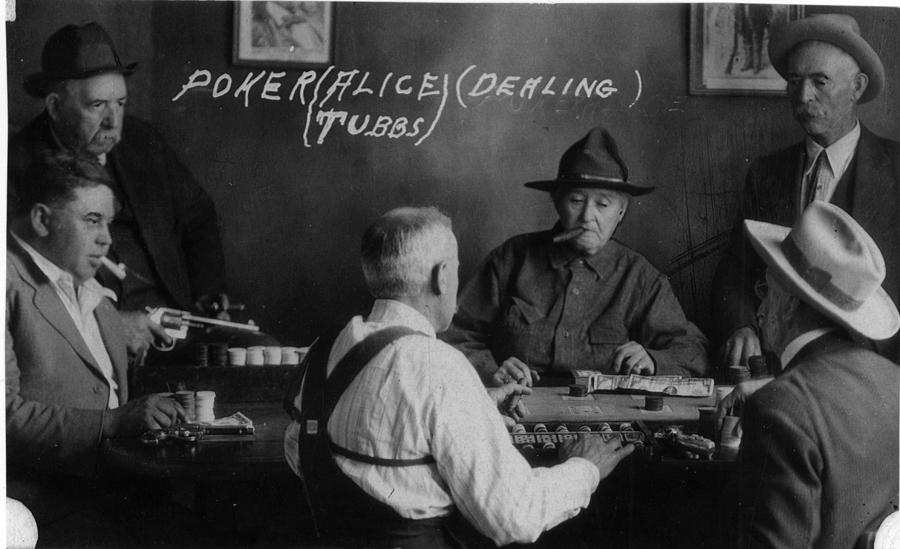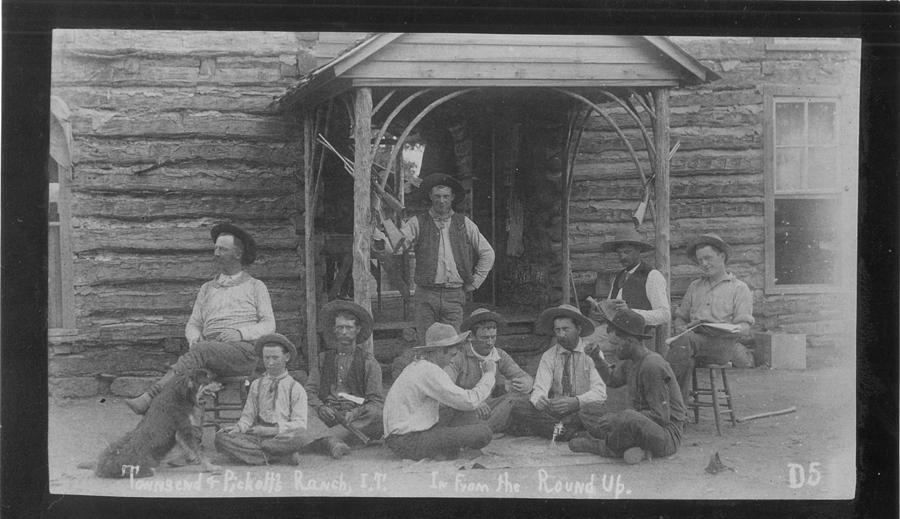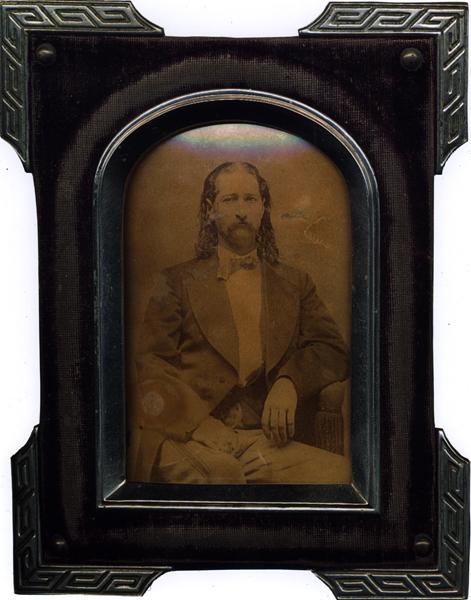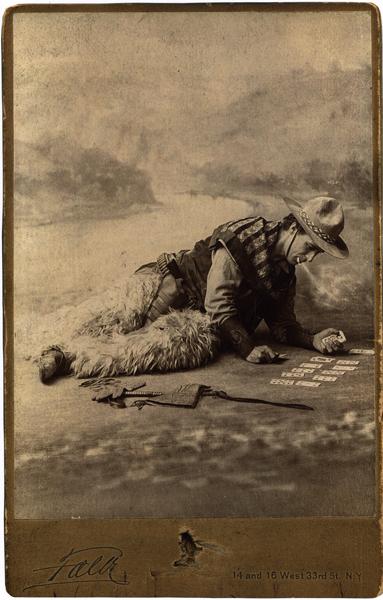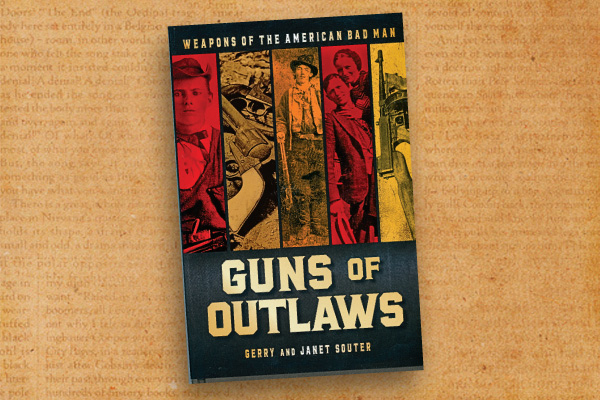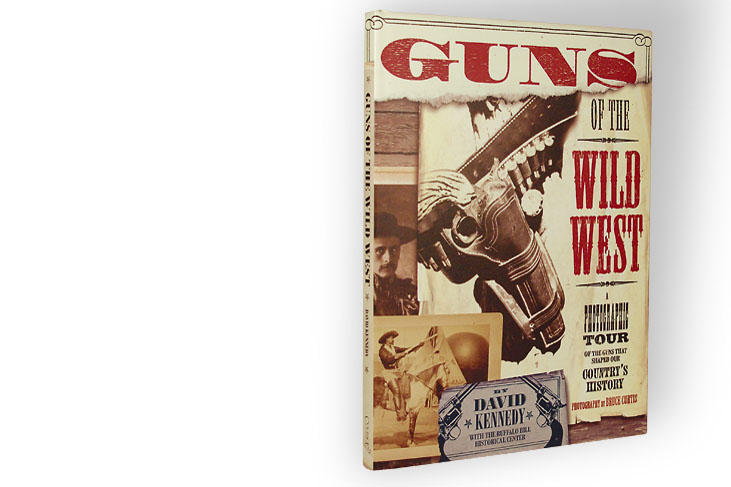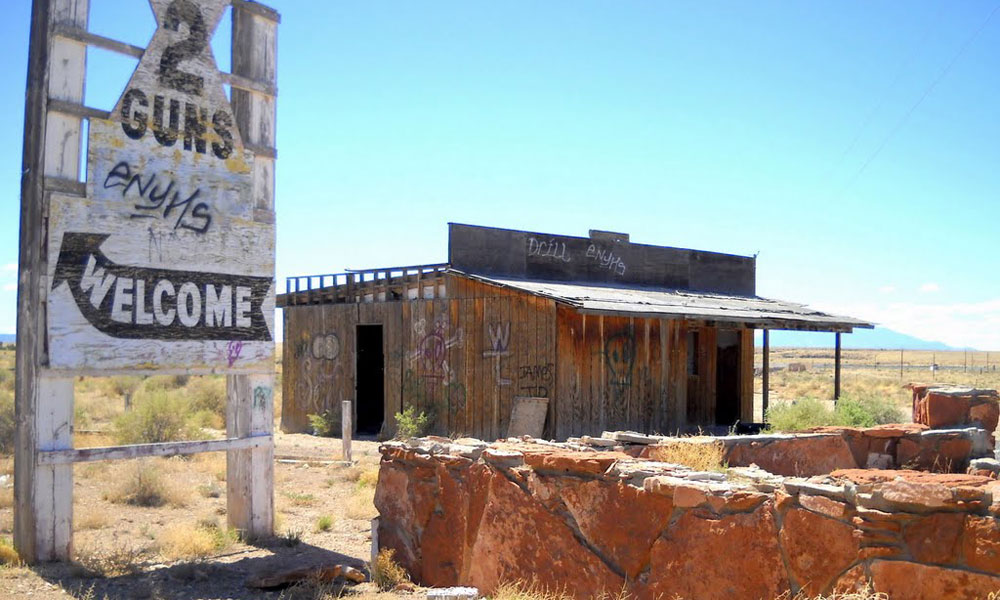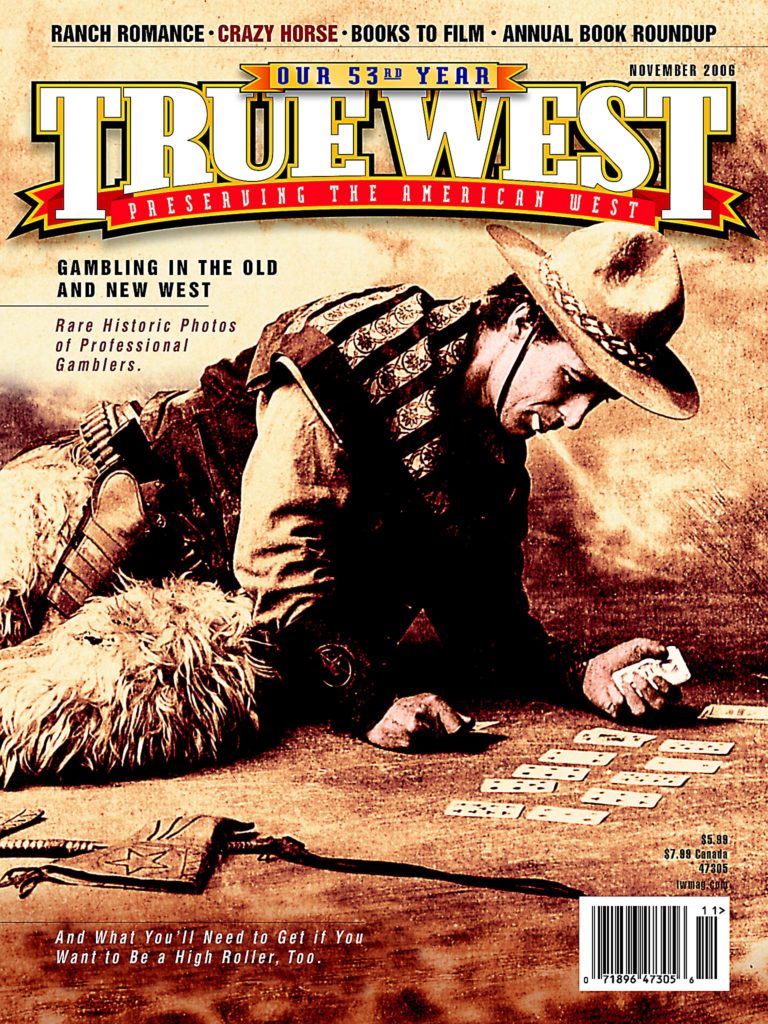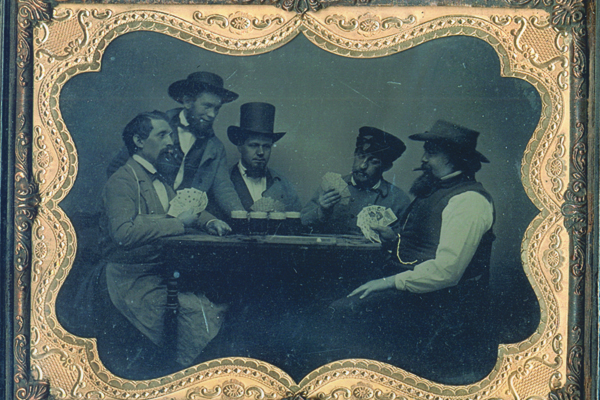 Saloons, with their gambling tables and faro layouts, lined the streets of Old West frontier towns.
Saloons, with their gambling tables and faro layouts, lined the streets of Old West frontier towns.
The predominantly male population had few entertainment choices in the booming gold and silver camps, and the towns at the end of the cattle trails and railroads. They gathered in the saloons to enjoy themselves and pass the time, as well as to try to win some money.
Drinking and gambling went hand-in-hand with gunfights and gunfighters in the Old West. Liquor, cards and guns were a deadly combination.
Gambling was a profession for some of those we know as gunfighters today and a pastime for all of them. Many owned saloons or gambling concessions. The best example of the gunfighter/gambler was Doc Holliday. Trained to be a dentist in Georgia, he became a professional gambler in the West. Most of his shoot-outs took place in saloons and gambling parlors. Though not considered pro-fessional gamblers, all of the Earps were saloon and gambling men, as were Bat Masterson, Luke Short, Ben Thompson … and the list goes on.
The professional gamblers considered themselves to be of a special breed—at least they dressed that way. Today, they would be considered “Dandies.” Except in rare instances, whatever respect they held was among their own, and there was a lot of professional rivalry.
Just look at John Wesley Hardin, whose drinking and gambling, combined with an ever-present chip on his shoulder and a gun within reach, led to many of his numerous gunfights. Hardin and Wild Bill Hickok, arguably the two greatest gunfighters, both died gambling … gunned down from behind.
Of course, not only gunfighters and professionals gambled. Cowboys crowded into the saloons, especially when they reached the Kansas cow-towns and gambled away their wages. They also gambled among themselves on the way up the trail and in their bunkhouse.
Professional gamblers are still around today, but they have certainly changed. Have a look at some of these original images of Old West gamblers and gambling places, and compare them with the casinos and the guys you see on TV today playing Texas Hold ’em.
Hardin and the Gem Saloon
John Wesley Hardin acquired a fearsome reputation from the time of his first killing in 1868 at the age of 15 until he fled Texas in 1874. Never a bandit or an outlaw, Hardin “killed men just to see them kick,” one Texas Ranger wrote. Fearing a mob lynching more that the law, he went to Florida and took the name John Swain. There he purchased a saloon and continued his drinking and gambling for three years until he was captured and returned to Texas. In the 1875 photo of him (shown above), he “looks exactly what he was: a gambler,” writes Leon Metz in his biography of Hardin. The original photo is from Hardin’s personal photo album. After spending 14 years in prison, Hardin ended up in El Paso, Texas, where he continued his drinking and gambling, losing money almost daily in the saloons. The Gem, certainly an upscale saloon of the day, was one of his favorite hangouts. At least it was until, upset by his luck at dice, he pulled out his pistol and raked the money off the table in the upstairs gambling room. Shown is one photo of the interior of the Gem Saloon, with an advertisement. Also shown is a dice cup (above) from the saloon.
Bat Masterson
Bat Masterson is best known today as a lawman in Dodge City, Kansas. After Dodge, Bat operated saloons in Colorado. He took particular interest in prize fighting, a very popular gambling activity at the turn of the 20th century. He gained renown as a “sporting man” and moved to New York City where he became a sportswriter for a Manhattan newspaper. This photo was taken when Masterson was in his prime as a sporting man and gambler in Colorado—and he looks like a prosperous one, too.
Ben Thompson Killed at the Vaudeville
San Antonio’s Vaudeville Theatre and Saloon, which, of course, included a gambling room, was the scene of the violent death of gunfighter Ben Thompson and Uvalde County Sheriff John King Fisher. Below, we see Ben as a gentleman gambler. The proprietor of the establishment, and the one who orchestrated Thompson’s death, was W.H. “Billy” Simms, photographed at far right in the finest gambling/sporting man attire and pose.
Luke Short
Luke Short was a professional gambler whose troubles in his saloon business brought about the gathering in Dodge City of Wyatt Earp, Bat Masterson, Doc Holliday and other gunfighters in 1883 (some historians question whether Holliday was there, even though newspapers report he was on his way to Dodge). No shoot-out took place, but they got together, minus Holliday, for the “shooting” of the famous “Peace Commission” photograph. (The photo would have been more properly labeled “Premiere Gamblers of the Old West.”) Short’s gunfight with Jim Courtright, fatal to Courtright, took place later, just outside Short’s White Elephant Saloon in Fort Worth, Texas.
Wyatt Earp’s Dexter Saloon
Wyatt Earp had gambling concessions in Tombstone, Arizona, and later would have saloons in other Western towns, including the Dexter in Nome, Alaska. This photo of Wyatt was taken in Nome in 1898-99. Interestingly, Virgil, the second most famous of the “Fighting Earps” and Tombstone’s city marshal, played poker all night with none other than Tom McLaury, Ike Clanton and Sheriff Johnny Behan, the game breaking up only hours before they met at the site of the O.K. Corral gunfight. Morgan, the third Earp in the gunfight, was assassinated in retaliation while playing pool in the Campbell and Hatch Saloon. The more timid brother, James, was a bartender and gambler in Dodge City and Tombstone.
Wild Bill Hickok
A card game disagreement brought about Wild Bill Hickok’s classic gunfight with Dave Tutt in Springfield, Missouri, in 1865, which first brought Hickok renown as a gunfighter. Many card games later, legend says Hickok was holding two pairs, aces and eights, in a Deadwood saloon in 1876 when Jack McCall shot him from behind. A gambling disagreement may have been McCall’s motivation for shooting Hickok. This albumen photo mounted on glass was taken in Abilene, Kansas, in 1871, depicting Hickok more in the style of a gambler than that of a lawman.
Bud Frazer and Jim Miller
On September 14, 1896, at 9:30 a.m., Bud Frazer (far left) was playing dominos in a Toyah, Texas, saloon when Jim Miller (left) “emptied both barrels of a double barrel shotgun into Bud’s head, scattering his brains all over the room,” as reported by the Eddy County Current, a few days after the killing. At one time, Frazer had been a lawman in Pecos, Texas, and Miller was his deputy. Then they started shooting each other. Frazer shot Miller on two occasions, neither of which proved fatal. Miller’s double-barreled shotgun settled the feud, and Jim wired his wife, “Bud Frazer and I had a fight. Frazer is dead.” Miller was a man of few words.
Poker Alice
The Old West had a few female gamblers who have come down in history. Among them was Alice Ivers Duffield Tubbs Huckert, better known as Poker Alice. She dealt faro and played poker across the West, spending most of her time in the 1870s-80s in Colorado and South Dakota’s Black Hills. Alice liked men and gambling. She must have been happy when this publicity photo was taken of her for the Days of ’76 celebration in Deadwood, South Dakota, in 1926.
Chips worth Bettin’ the Ranch
Stakes in Old West games of chance could be gold dust, coins, paper currency or anything of value. The use of uniformly-shaped chips, though, made the game much more manageable for the house. Some of those earlier chips were made of bone or ivory (top left), but these were expensive and quantities never met the ever-increasing demand. By the 1880s, composition chips were introduced. Made of clay and shellac, these could be had for a fraction of the cost of ivory chips. They were made in a few solid colors, each color representing a certain monetary value (bottom, far left). The problem with these chips was that they were readily available from mail-order vendors, permitting a cheat to bring his own chips to the game that were identical to the house’s chips. To counter these ringers, the industry introduced the composition chip with an inlay infused in the center or a design engraved on it (examples at left). Saloon owners could custom order chips with any logo, of which hundreds of examples survive.
Photo Gallery
– All photos courtesy Robert G. McCubbin –
– Poker chips courtesy John Wagner Collection –




